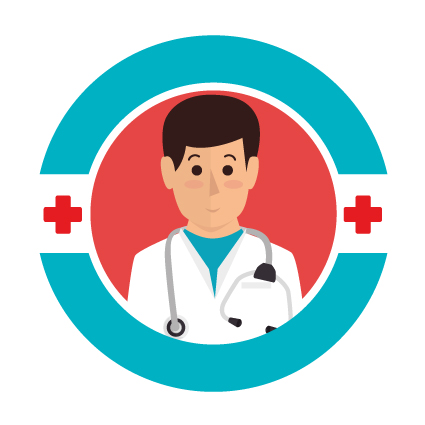
A rash is a change in the skin that can result in bumpy, blotchy, or scaly patches. Many people have had an itchy rash at some point in their lives. Many are harmless and will go away on their own, but others may be more persistent due to underlying causes or conditions.
Many different factors can cause an itchy rash, including:
- an allergic reaction to foods, medications, or objects, such as nickel earrings
- touching or exposure to environmental allergens
- diseases such as chickenpox
- chronic conditions, such as psoriasis
- infections such as ringworm
- infestations such as scabies
Sometimes, an itchy rash will improve without complicated treatment or prescription medication. However, a rash can be an early indication or warning sign of a more serious long-term health concern, which a person should address.
It is important to take itchy rashes seriously, particularly if they are long lasting and of unknown origin. Here are eight of the more common examples of itchy rashes.
A range of everyday products and plants from rubber gloves to poison ivy contain different allergies that can cause an itchy rash in people who are sensitive to them.
The medical term for this response is allergic contact dermatitis. According to the National Institutes of Health NIH, nickel, which inexpensive earrings for pierced ears often contain, is the most common cause of allergic contact dermatitis.
Symptoms can develop within a day or two after exposure but may take weeks to go away.
Calamine lotions and oatmeal baths might help control itching.
Severe forms, including a rash on the face or an uncomfortable rash that will not go away, may require prescription topical or oral steroids. Avoiding known triggers is the best way to prevent future episodes.
Many doctors and skin specialists consider psoriasis to be an autoimmune inflammatory disorder that disrupts the normal cycle of skin cells. A haywire immune system causes white blood cells to wreak havoc in the skin, resulting in red, raised, scaly plaques.
Around 2% of people living in the United States have psoriasis. It is a genetic disease that runs in families, so it is not contagious. This means that a person cannot contract psoriasis from coming into contact with someone who has it.
The location and appearance of plaques depend on the type of psoriasis.
With plaque psoriasis, which affects 90% of people with psoriasis, pink or red plaques develop in symmetrical patterns on the elbows, knees, and near the hairline. These plaques usually have a layer of white dead skin cells.
Another common type of psoriasis is guttate psoriasis. People with guttate psoriasis develop multiple little raised, red papules and plaques.
More severe forms of psoriasis, such as erythrodermic psoriasis, which affects a large portion of the body, or pustular psoriasis, which causes pus-filled blisters, are less common. Psoriasis can also cause pitting and other damage to fingernails and toenails.
In addition to the physical and social discomfort that an itchy psoriasis rash can cause, it can also lead to other complications, including psoriatic arthritis. This affects up to 30% of people with psoriasis and carries an increased risk for cardiovascular disease, diabetes, inflammatory bowel disease, and metabolic syndrome.
Treatment depends on the severity of an individual’s psoriasis. Options range from topical skin treatments to light therapy to systemic medications that target the immune system.
Hives, or urticaria, are a kind of itchy rash triggered by the body’s release of histamine in response to:
- eating certain foods, including shellfish, peanuts, and tree nuts
- taking medications that someone has an allergy to, such as sulfa drugs and penicillin
- insect bites
- sunlight
- intense physical activity
- infections
The American College of Allergy, Asthma, & Immunology report that roughly 20% of people will experience hives at some point in their lives.
In most cases, hives get better within a few days. However, some people have hives for months at a time.
Allergies rarely cause these long lasting or chronic cases of hives. Antihistamines can usually control itching and discomfort in acute cases.
Also known as miliaria, heat rash develops when the sweat glands in the skin become blocked, causing inflammation and itchy red bumps.
Heat rash does not usually require treatment and goes away on its own, particularly when the person with the rash moves to a cooler area.
Some other conditions can also cause an itchy rash. Some common examples include:
Chickenpox
The primary symptom of chickenpox is a rash that develops into itchy, fluid-filled blisters. These will eventually scab over. Chickenpox is highly contagious, so individuals with the condition must avoid contact with others until no new blisters form, and all of the old blisters have scabbed over. Antihistamines and lukewarm oatmeal baths can help control the itching.
Measles
A very contagious virus causes measles. It typically results in a brownish blotchy rash, but other symptoms may develop before the rash appears. These include fever, white spots inside the mouth, and a runny nose.
Hand, foot, and mouth disease
As the name suggests, hand, foot, and mouth disease can cause an itchy or painful rash on the hands or feet or both. It is most common in children under 5 years old.
It is a contagious virus that can spread through nose and throat secretions, feces, or scabs and blisters.
Aside from a rash, other symptoms include fever, sore throat, and mouth sores.
Bedbugs, which are roughly the size of poppy seeds, can cause very visible and itchy welts and rashes.
People who are highly sensitive or allergic to bed bugs may need antihistamines to reduce the itching.
It usually takes professionals to remove bed bugs. However, some of these methods may help.
The scabies mite, which is invisible to the naked eye, can also cause an itchy rash. A person can develop scabies after direct contact with a person who has the condition, or through contact with infected objects. Scabies is readily treated but requires prescription medication.
Infections can cause an itchy rash on different parts of the body.
Ringworm is a fungal infection that causes a circular, red, or brown itchy rash with a thicker edge.
Athlete’s foot is ringworm that develops on a person’s foot. However, it can spread from one body part to another.
Both ringworm and athlete’s foot require antifungal creams, sprays, or sometimes oral medications for treatment.
Effective treatment for an itchy rash depends on the cause.
Some rashes, such as those due to poison ivy, will go away on their own. Others, such as psoriasis, tend to be a lifelong condition.
There are many reasons why a person may have an itchy rash. It may be a side effect of a more severe underlying condition. A person should see a doctor if they are concerned about the cause of their rash.
Individuals with long lasting or unexplained rashes should see a doctor for symptom relief.
It is possible to manage most rashes, including those caused by more serious medical conditions, with medical treatment.
Related Post
 14
14 Aug
7 Essential Healthy Habits to Instill in Your Kids in 2024
In the high-speed universe of 2024, raising solid and balanced kids requires a blend of shrewd nurturing and adjusting to the most recent patterns. As guardians, it's critical to instill propensities that cultivate both physical and mental prosperity in our.
Read More 29
29 Jul
Which Symptom Indicates That Someone May Need Mental Health Treatment?
Today! In this article!, you can find the best treatment for mental health. Which symptom indicates that someone may need mental health treatment? Perceive the indications of requiring emotional well-being treatment and assume responsibility for your prosperity. Try not to hold.
Read More 08
08 Jul
What Is Self-Management of Chronic Disease?
Diabetes, joint inflammation, hypertension, lung illness, corpulence and other persistent sicknesses can make life challenging to oversee for a great many more seasoned grown-ups, frequently compelling them to surrender their freedom. The Challenges of Chronic Disease More established grown-ups are lopsidedly impacted.
Read More 01
01 Jul
7 Lifestyle Tips to Reduce Your Cancer Risk
How in all actuality do individuals bring down the possibilities getting malignant growth? There's a lot of exhortation. Yet, on occasion, guidance from one review conflicts with the exhortation from another. Disease avoidance data keeps on creating. In any case,.
Read More